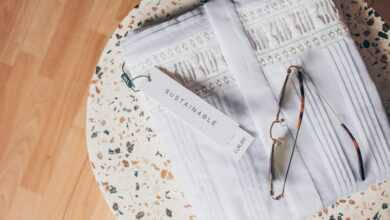Casual Style
Cargo Trousers Are Back: The Sleek (Not Street) Way To Wear Them
Once the uniform of 2000s boybands and off-duty lads, cargo trousers have made a serious…
Capsule Wardrobe
The High-Low Formula: Mixing Premium & Budget Pieces Like a Pro
You don’t need a wardrobe full of designer gear to look sharp. In fact, some…
Casual Style
The Style-Confidence Loop: Tiny Upgrades That Change How You Walk Into Rooms
You know that feeling when you walk into a room and you’re just… on it?…
Casual Style
Hoodie, But Grown-Up: 7 Ways To Style A Hoodie Past Sixth Form
Let’s be honest — most of us started wearing hoodies somewhere between school and the…
Beard & Shaving
The Bald & Bearded Blueprint: Barber Talk, Beard Lengths & Head-Shine Control
So, you’ve embraced the bald life — good move. Pairing it with a solid beard…
Formalwear
The Dark Suit Toolbox: 1 Suit, 8 Occasions (Complete Outfit Matrix)
Here’s the thing about a dark suit — it’s the closest thing a man has…
Accessories
Jewellery Without The Mid-Life Crisis: Rings, Chains & When To Stop
Let’s be honest—most blokes don’t grow up dreaming about jewellery. You hit your thirties, maybe…
Clothing
Fabric 101 For Blokes: When To Choose Wool, Twill, Oxford, Poplin & Flannel
Let’s cut to the chase: if you know your fabrics, getting dressed gets miles easier.…
Lifestyle
The Perfect Pub Walk Outfit: A Bloke’s Guide to Conquering Mud, Sun, and Pints
It’s one of Britain’s finest traditions: the pub walk. A soul-refreshing tramp through the countryside,…
Footwear
Boots Breakdown: Chelsea vs. Chukka vs. Service vs. Hiking (And How to Wear Them)
As soon as the British weather takes its inevitable turn, a good pair of boots…













